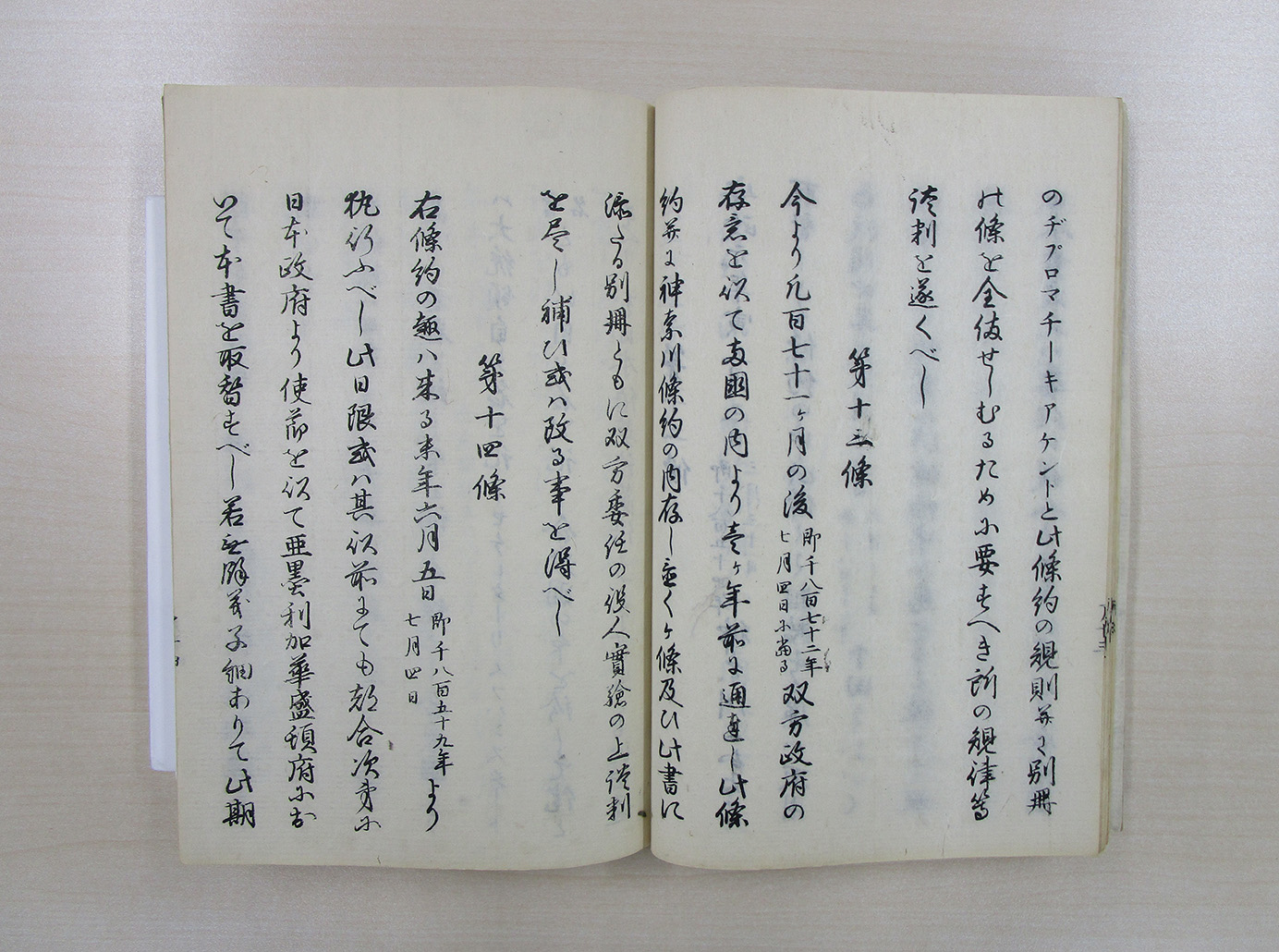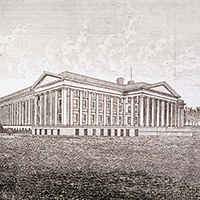
Explanatory Column
Dispatch of Iwakura Mission
In November 1871, a delegation headed by Iwakura Tomomi set sail from Yokohama to Europe and America on a mission that would take nearly three years to complete. Why was such a mission dispatched to foreign countries during the very start of Meiji Restoration?
A look at the historical record shows that the idea for a mission to Europe and America arose from the vision of various people soon after the establishment of the Meiji government.
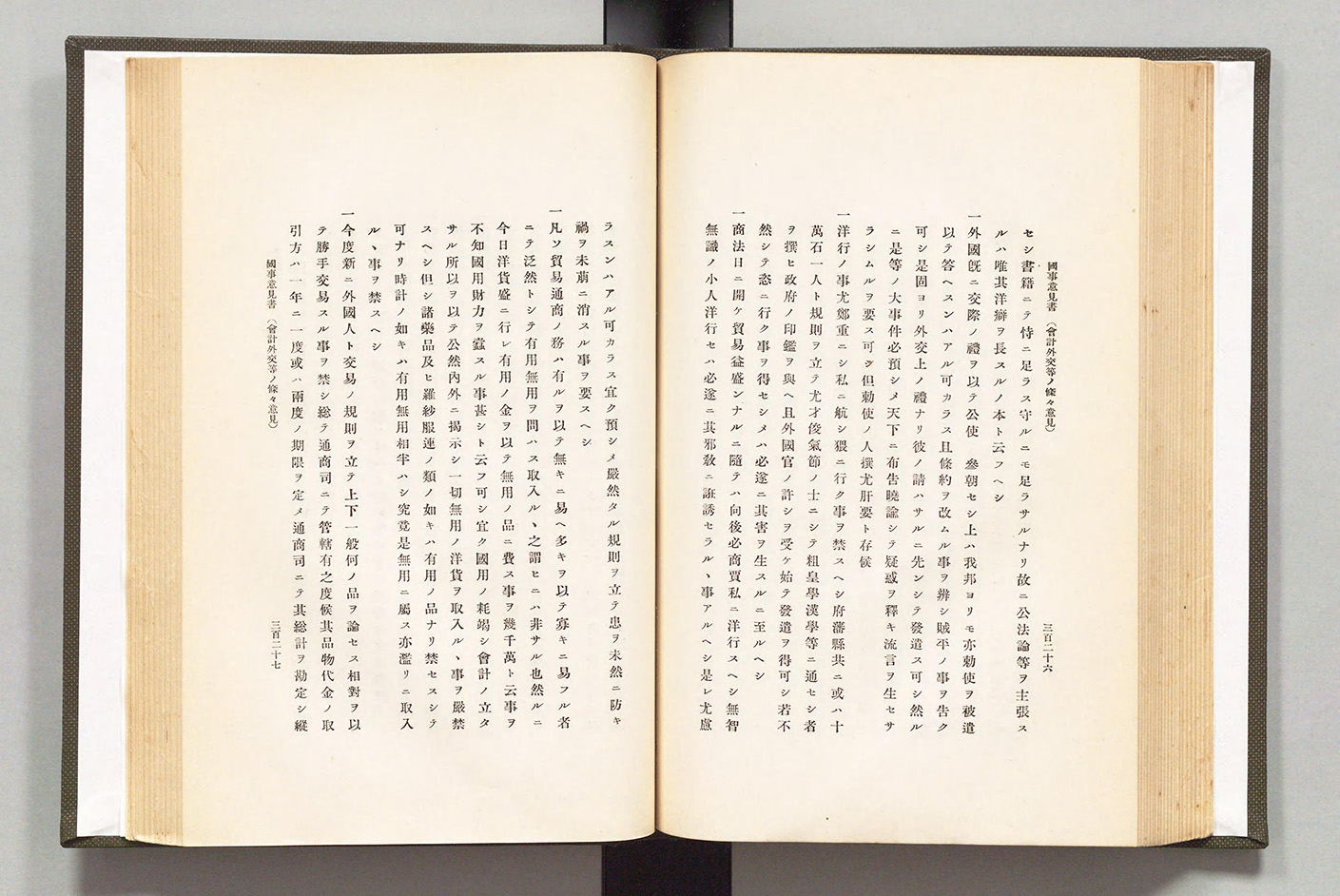
For example, in February 1869, Iwakura submitted his opinion in a missive about accounting and diplomacy. He suggested that sending reciprocal imperial envoys to Europe and America were necessary as “a matter of decorum” in view of the fact that Western countries had been dispatching their ministers to Japan.
Also, in May of the same year, missionary Guido Verbeck submitted a proposal titled "Brief Sketch" to Okuma Shigenobu. In this document, Verbeck pointed out that in order to understand Western civilization, it would be useful for Japanese to see it for themselves and gain firsthand experience of it. He recommended that the Japanese government dispatch a fact-finding committee to experience Western civilization directly.
Another consideration was the trade agreement of 1858 that the bakufu had signed with Western countries. The agreement contained a stipulation that the contents be revised 171 months after signing, and the May 1872 deadline was approaching. In January 1871, Ito Hirobumi submitted to government leaders a written opinion that specially appointed Councilor be sent overseas to investigate foreign affairs, treaties and international trade regulations in preparation for the treaty revisions the following year.
Thus, the decision to dispatch diplomatic missions to Europe and America was motivated from a variety perspectives, including foreign relations, a need observe foreign countries firsthand, and the issue of unequal treaty revision.
It was during the autumn of 1871, when domestic reforms were temporarily brought to a halt by the abolition of feudal domains and establishment of prefectures (haihan-chiken), that the vision to dispatch the delegation began moving toward its realization. The diaries of Kido Takayoshi and Okubo Toshimichi reveal that frequent discussions of foreign missions occurred starting from around the end of August.
Government leadership quickly pushed forward preparations for the mission and in October they made commissioner appointments. Disagreements appear to have taken place over the selections, but eventually Iwakura was appointed the Mission’s leader, while Kido and Ito (of Choshu), Okubo (of Satsuma), Yamaguchi Naoyoshi (of Saga) were chosen as deputy delegates to avoid the appearance of domain favoritism.
According to the official mission document the delegates received, the purpose of the mission consisted of the following three points: First, it was to pay courtesy calls to each country with which treaty was concluded and deepen friendly relations. Second, it was to negotiate with these countries on the subject of treaty revisions scheduled to expire in the following year. Third, it was to investigate and survey the laws and regulations of each civilized country in order to revise domestic systems that are inconsistent with the laws of other world powers. It can be seen that the purpose of the mission was an aggregate statement on the various viewpoints discussed above.
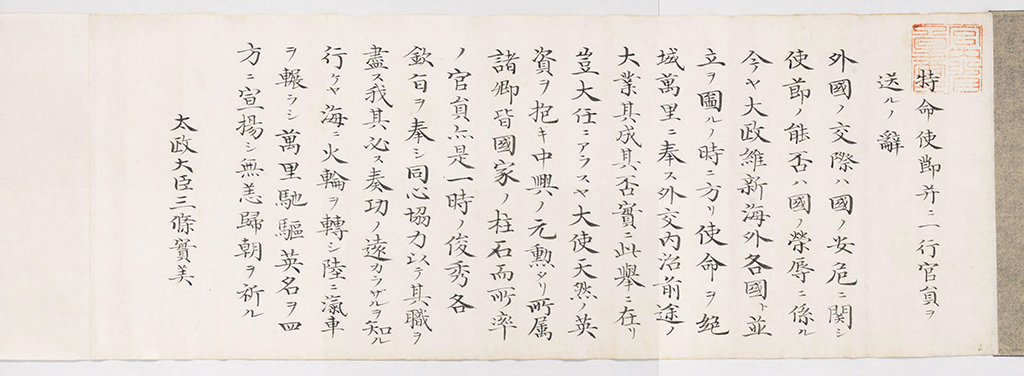
at a banquet held at his residence on November 6, six days before their departure.
(Shoryo-bu, The Imperial Household Agency, Call Number: 74530).
It may be inferred in particular with regard to the first objective just how important a mission establishing relations with foreign countries was based on Sanjō Sanetomi’s famous send-off address in which he spoke of how such relations were a matter of vital importance to the nation’s existence.
Thus, the idea of dispatching envoys right after the Meiji Restoration had come to pass came to embrace a variety of objectives and resulted in the visits to the U.S. and Europe by this large mission that would involve some 150 people.
大久保利謙編『岩倉使節の研究』(宗高書房、1976年)
田中彰『岩倉使節団の歴史的研究』(岩波書店、2002年)
芳賀徹編『岩倉使節団の比較文化史的研究』(思文閣出版、2003年)
Maintaining control over Japanese scholars abroad and in the Iwakura Mission
When the prohibition on overseas travel was removed in the 19th century, many Japanese sought to travel to America and Europe to study. Not a few of these were among 150 participants who joined the Iwakura Mission along their travel route.
The diaries of Kido Takayoshi, Envoy Extraordinary and Minister Plenipotentiary of the Iwakura Mission and Takasaki Seifu, who was dispatched from the legislative chamber for the inspection of Western countries, reveal that the Mission regularly interacted with Japanese nationals residing abroad at expedition destinations. This is evidence that there were many Japanese living in Europe and America in the early days of the Meiji Period.
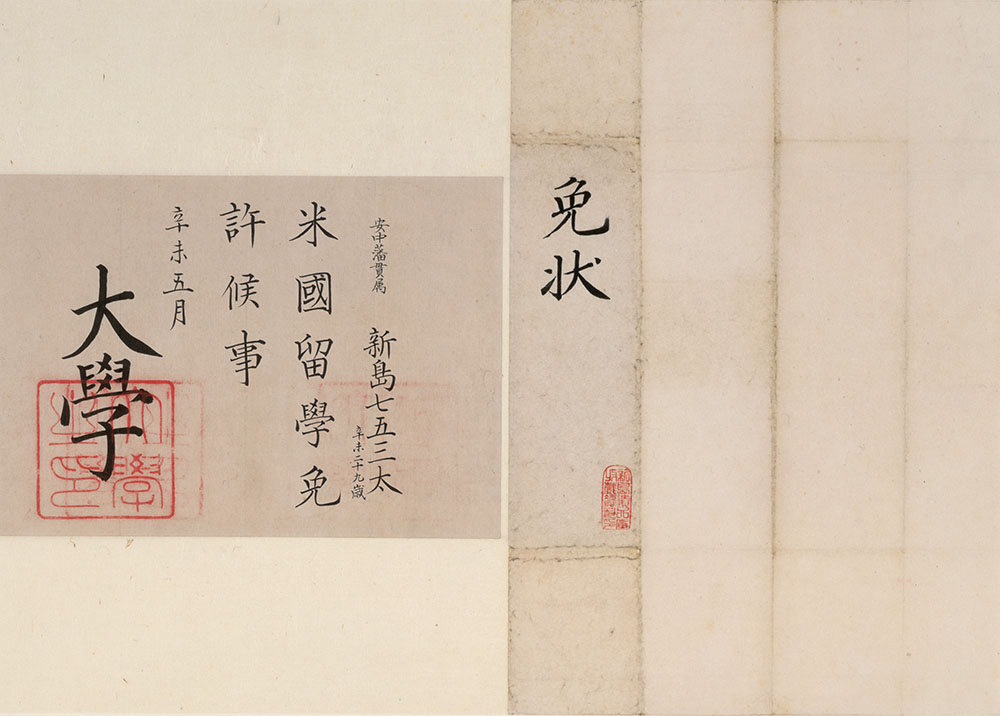
Nearly all Japanese abroad were students who had travelled to European and American destinations to study Western civilization. According to the Ministry of Education, the number of Japanese students who went abroad for study was 373 as of 1873 (Ref. A07062113200).
According to the "Laws of Foreign Study" of 1870, the administration of foreign studies was under the jurisdiction of the Office of Daigaku (later, the Ministry of Education), however, students were in fact dispatched overseas by a variety of ministries.
By ministry, the largest numbers of students were dispatched by the Ministry of War from 1870 through 1871; from 1871 through 1872, the Colonization Commission, the Ministry of Finance and the Ministry of Industry also dispatched many students overseas. From the list of persons on the Iwakura Mission when it set sail from Yokohama, we can confirm the names of Egawa Hidetake, who was dispatched by the Ministry of War to the United States, Tsuda Ume (among other female students dispatched by the Colonization Commission) and Matsuda Kanejiro who was sent by the Ministry of Industry.
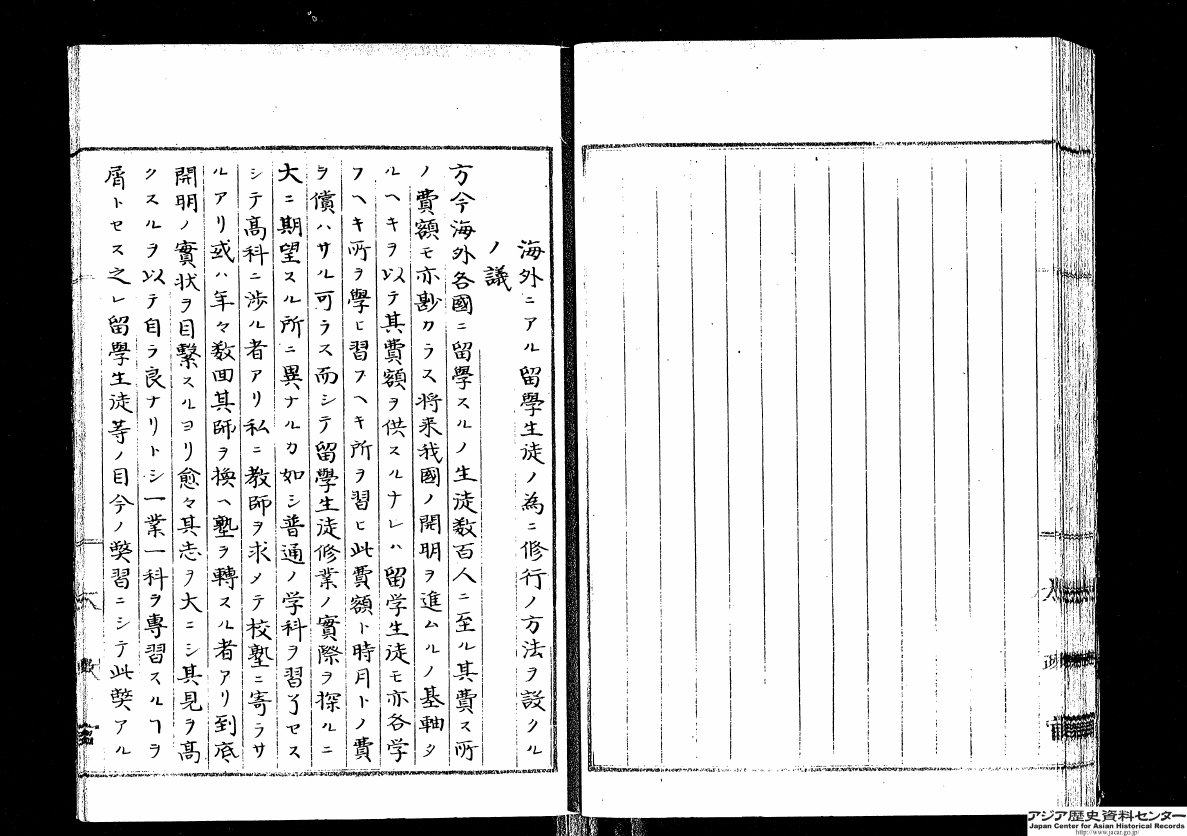
However, it cannot be said that all the overseas students were always serious about their inspections and scholarly duties. Some wished to engage in high-level studies without covering basics, while others changed teachers or schools. The government considered such "lazy (wilful) students" to be a problem (Ref. A04017147400).
Moreover, many changed foreign study destinations on their own after leaving Japan. For example, four students — Bojo Toshiaya, Shimizudani Kinnaru, Hirata Tosuke, and Dohi Momoyuki — were initially ordered to Russia, but on their departure day from Germany decided to remain in Berlin claiming illness. Later, they applied to change their foreign study location to Germany never to set foot in Russia. Due to the great expense used on overseas students, the government began seeking a revised plan to cope with the situation.
The Iwakura Mission was expected to report on the progress of overseas students onsite and make determinations as to how to control them. In official letters from Ambassador Extraordinary and Plenipotentiary, Iwakura Tomomi and other mission members to "Traveling Government", it can be seen that discussions concerning “control over students abroad” with consideration to the the establishment of regulations occurred between Terashima Munenori and Hisanobu Samejima, who had been dispatched to Europe as Charges d'Affaires (Ref. A04017148400). In addition, Envoy Extraordinary and Minister Plenipotentiary Ito Hirobumi wrote in his petition to the Minister of Education Oki Takato and others about a situation where subjects and places of study were decided by students without permission. He proposed to completely reform the selection method of overseas students.
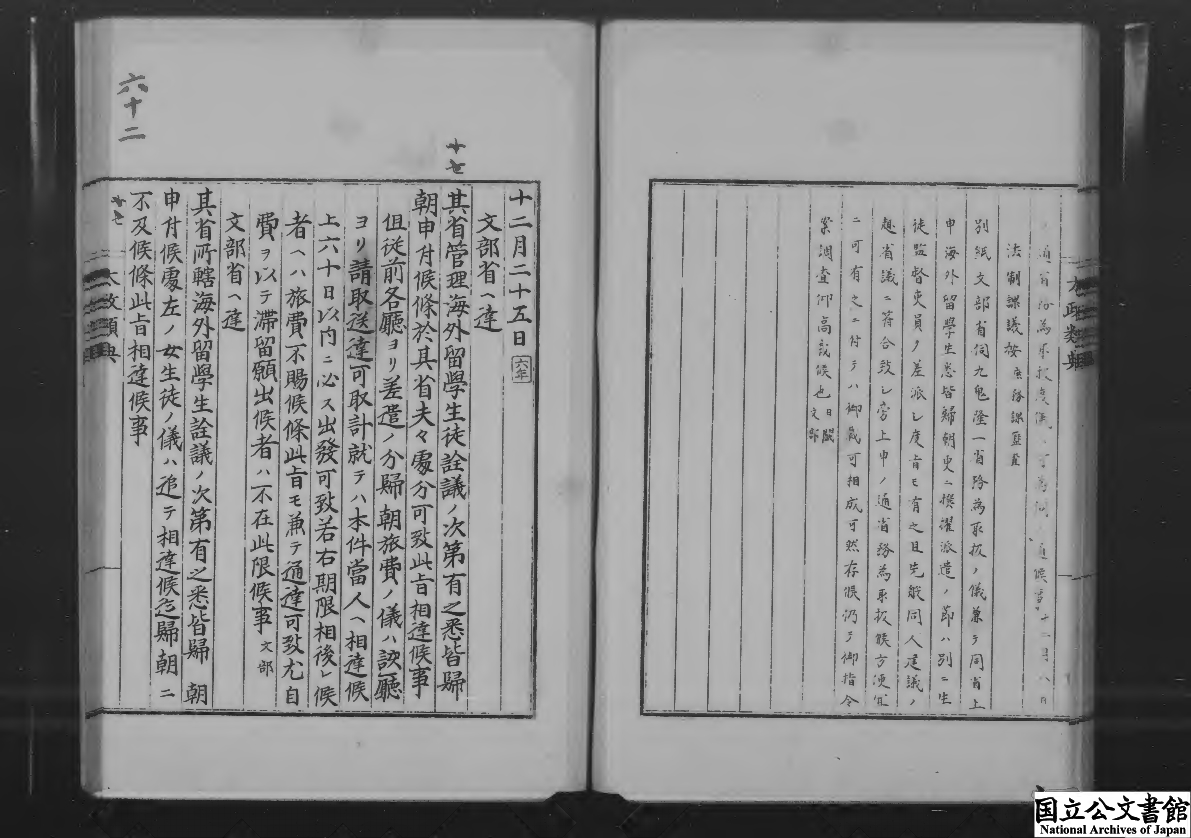
The Education System Order of August, 1872 stipulated "provisions concerning regulation of students overseas" that were included for the purpose of reforming the study abroad system. According to the order: (1) government sponsored overseas students are to be divided into "beginning classes" and "advanced classes", (2) overseas students should be supervised by the Ministry of Education through the Charges d'Affaires residing overseas (3), selection examinations before dispatch and final examinations after returning to Japan are to be imposed on overseas students. In line with these provisions, a policy to carry out a reduction in the number of students who were abroad was based on determinations of certain degrees of achievement. In December 1873, when the Iwakura Mission returned to Japan, the Ministry of Education sent notices en masse to Japanese students still overseas ordering them to return home within 60 days.
石附実『近代日本の海外留学史』(ミネルヴァ書房、1972年)
渡辺実『近代日本海外留学生史(上)』(講談社、1977年)
青山英幸「留学生と岩倉使節団」(田中彰・高田誠二編著『『米欧回覧実記』の学際的研究』北海道大学図書刊行会、1993年)
Views on government and society while the Iwakura Mission was dispatched to Europe from the viewpoint of "Traveling Government"
The "Traveling Government" in Japan was established while the Iwakura Mission was away in Europe and America. The government was embodied by Sanjo Sanetomi, Saigo Takamori, Okuma Shigenobu, Itagaki Taisuke, Goto Shojiro, Soejima Taneomi, Inoue Kaoru, Oki Takato and others. According to the "contracts of minister, cabinet councilor, and vice-minister" (Ref. A04017149000), a statement of agreement among government office personnel and domestic policy, the "Traveling Government" and the Iwakura Mission reported regularly to each other regarding domestic politics, progress in treaty negotiations, and local states of affairs through exchanges of official correspondence. Although new systemic reforms would not go into effect until the Iwakura Mission’s return, the enforcement of policies to unify Japan’s domestic administration after the abolition of feudal domains to establish prefectures was approved along with other policies. So, what kind of policies did the "Traveling Government" implement while the Iwakura Mission was away? And, what was the domestic and foreign situation like at the time when these policies were enacted? Let's take a look at a few examples focusing on official correspondence that the "Traveling Government" sent to the mission.
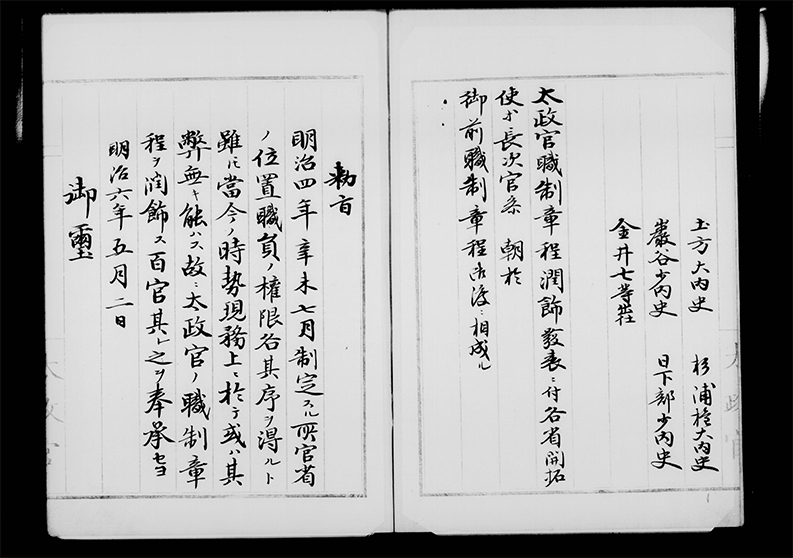
The "Traveling Government", while planning to unify the domestic administration, implemented various reforms in such areas as education, conscription ordinances, land tax reforms, the law, and religious policy. The government then set out to settle conflicts of authority between ministries that resulted from these reforms through the revision of the Dajokan (Grand Council of State) System of May 1873 (Image 1). The government proceeded with systemic reforms under the initiative of the Sei-in (Central Council of State). As a political tool to accomplish the above, they expanded the authority of the Sei-in, which was the central organization for the Dajokan System in matters including accounting, the resolution and drafting of policies and laws, tax increases or decreases, allocation of public funds for government offices, and military reforms.
However, this expansion of authority of the Sei-in caused discord in the government. Senior Vice Minister of Finance Inoue Kaoru and Shibusawa Eiichi, a third-ranked supernumerary government official of Finance, resigned from the Ministry of Finance where authority over accounting, taxation, currency production and currency issuance were reduced. Before the reform of the Dajokan System, Minister of Justice Eto Shinpei, Minister of Education Oki Takato and Chairman of the Legislature Goto Shojiro were appointed Councillors, but problems stemming from allocation of authority caused by the reforms became an issue of personnel affairs within the government.
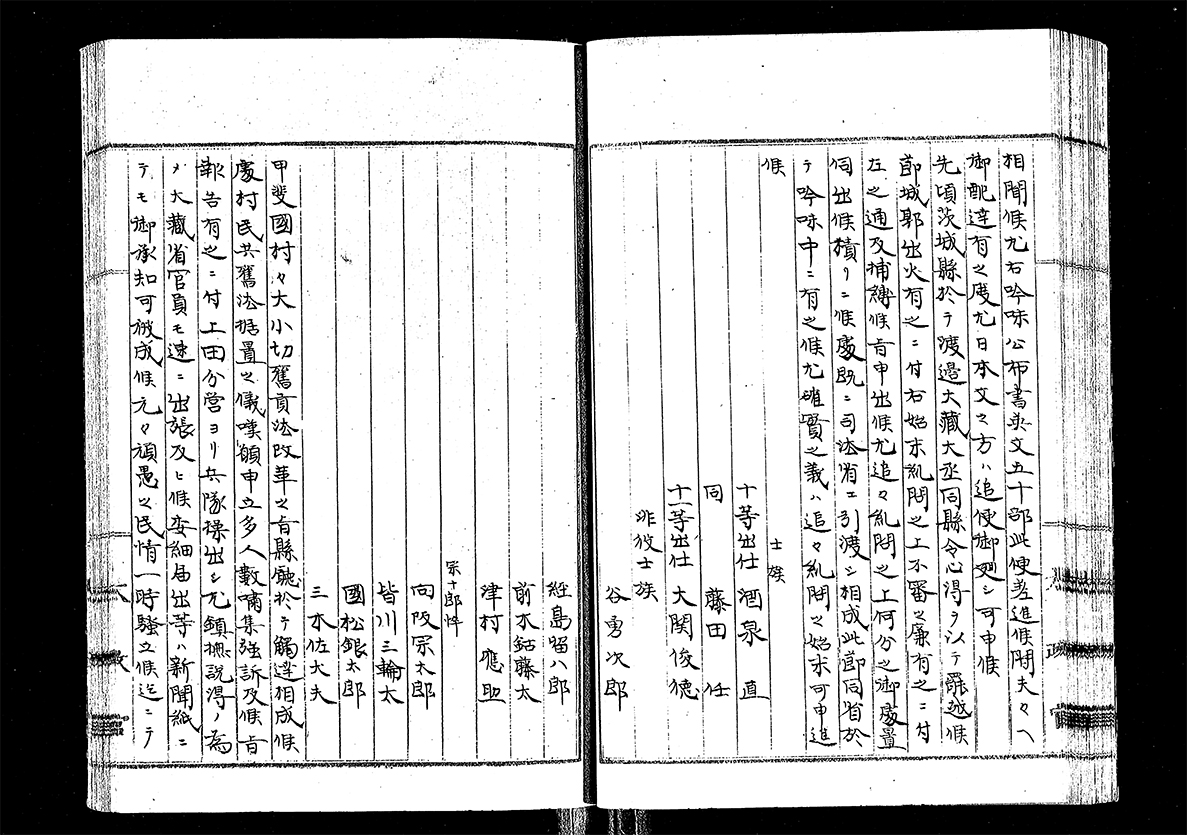
Social unrest increases in response to reforms. An official correspondence from the government sent to the mission in 1872 documented the Daishogiri riot, which occurred in Yamanashi Prefecture (Image 2). The Daishogiri riot was the result of dissatisfaction due to increased tax burdens after the abolishment of the prior tax law through decisive enforcement of Haihan-chiken (abolition of feudal domains and establishment of prefectures). The correspondence also documented similar incidents by farmers in Niigata, Oita and Shiga Prefectures, as well as protest movements against the new government by the shizoku (former-samurai), and mountain ascetic Buddhist sects. Reforms under the unstable societal situation caused opposition riots and insurgencies by the shizoku, with which the government had to expend great effort to cope.
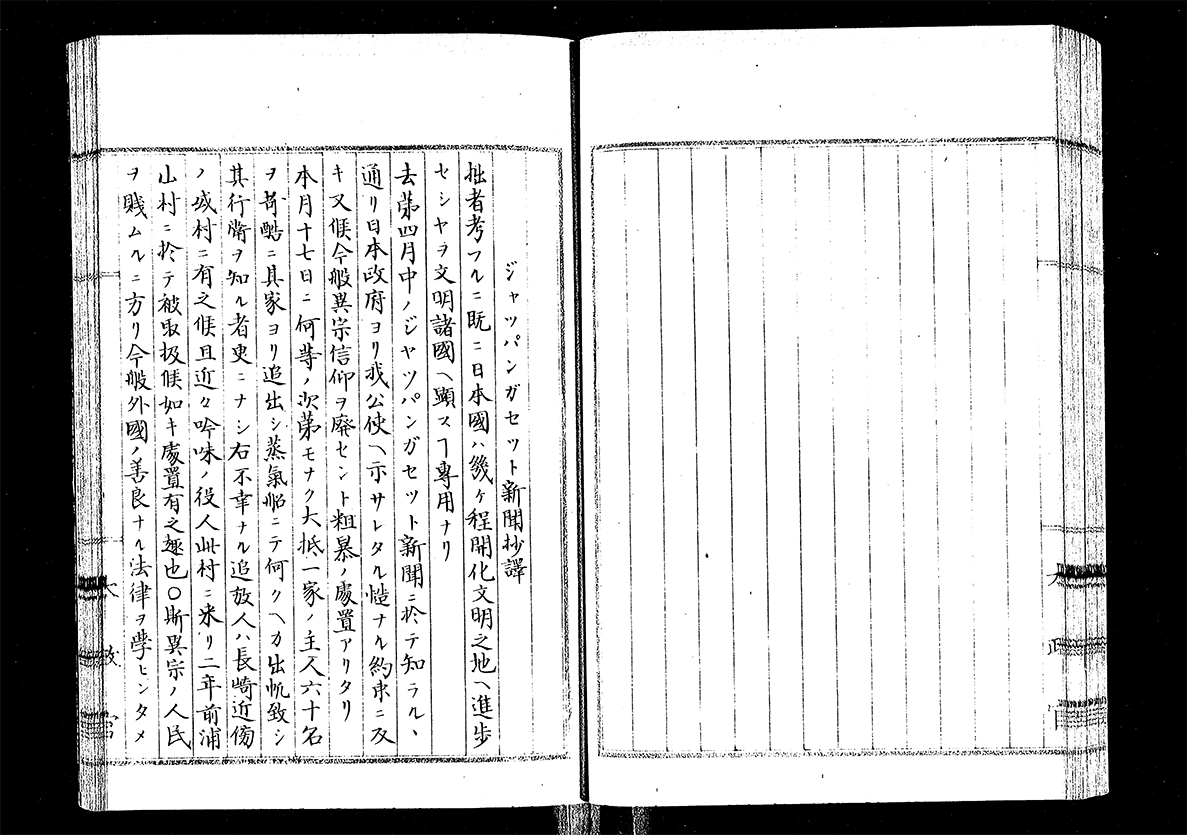
The Christianity issue was also a pending problem for the "Traveling Government". In particular, resistance from foreign countries over the control of Christianity influenced negotiations for treaty revisions. The government and mission personnel had to stand by their Christianity measures while being conscious of the reactions of foreign countries. To control Christianity in Nagasaki and Imari prefectures, the government, for fear of hindering the negotiations of the mission, required confirmation of details to the prefectures. On receipt of the reports, the mission told government officials to ask local government officials to deal with Christianity with extreme care. The difficulties faced by the government handling Christianity were apparent in the correspondence between the prefectures, the Ministry of Foreign Affairs, and the Dajokan (Council of State) and an abridged translation of a foreign newspaper recorded in "Official correspondences with Home Office, including documents attached to official correspondences.” (Image 3).
The government was pressed with difficult diplomatic correspondence.In 1871, people of Miyakojima whose ship ran aground in Formosa (Taiwan) were killed by local residents. Having received the news, governor of Kagoshima prefecture Oyama Tsunayoshi proposed the dispatch of troops to Formosa ("Filed material: The Mudan Incident: Secretary of Sain (Left Chamber)" (Ref. A07060236200). The government was divided into hard-liners who insisted on the dispatch of troops as "the measures to turn the frustration of the shizoku to foreign issues" ("Documents relating to Iwakura Tomomi, fifth") and an opposition party. Finally after discussion, the government decided to dispatch Foreign Minister Soejima Taneomi to Qing (China) for negotiations in March 1873. Additionally, in May of that year a mission to Korea was also discussed in response to a report by Hirotsu Hironobu who resided in Pusan, Korea. The mission to Qing had another aspect that would allow the shizoku to turn the focus their objections and frustrations onto foreign campaigns ("Saigo Takamori complete works Vol. 3"). Through foreign campaigns, the government endeavoured to solve the twin problems of domestic administration and foreign diplomatic disputes.
After the abolition of feudal domains and establishing prefectures by new the government, it developed system reforms in the absence of the Iwakura Mission.Domestically, the government was pressed to make difficult decisions and a need for decisive action regarding increasing social unrest due to the Haihan-chiken, while, on the foreign stage they needed to implement diplomatic measures for issues in Formosa and Korea. The government tried to solve both problems through foreign campaigns. However, confusion of the domestic administration seen in reformation of the Dajokan System and in decisions of foreign policy resulted in confrontations with the Iwakura Mission when it returned home, as there was also a "Seikanron debate"(debate over the invation of Korea) and political change.
笠原英彦『明治留守政府』(慶應義塾大学出版会、2010年)
柏原宏紀「太政官制潤飾の実相」(『日本歴史』750、2010年)
勝田政治「征韓論政変と大久保政権」(明治維新史学会編『講座明治維新 第4巻 近代国家の形成』有志舎、2012年)
Ideas of conquering Korea
While the Iwakura Mission explored Europe and America to learn about foreign countries, "Traveling Government" was engaged in a debate over Korea, the foreign country nearest to Japan.
By the time the mission returned home, the government had decided to dispatch Saigo Takamori to Korea, and in October 1873, political disputes arose over this issue between Iwakura Tomomi, Okubo Toshimichi and others on one side, and Saigo Takamori, Itagaki Taisuke and others on the other("Seikanron debate", Debate over the invation of Korea). What was this debate about that resulted in political change? To find the answer, we need to examine the background.
We’ll begin by examining the source of the ideas. By the mid-1800s, Japanese were aware of pressure from the West that began with the arrival of foreign ships. In response to this, Japan’s own territorial expansion to neighboring areas became a new priority, and preparations for this scheme and the necessity of unifying public opinion behind it became a new priority, with the emperor as a central component. For example, Hirata Atsutane, a scholar of ancient Japanese ideology and culture, insisted that Japan was the center of the world, and the Japanese emperor should face the world as its sovereign lord. Fujita Yukoku, Fujita Toko (the son of Fujita Yukoku), and Aizawa Seishisai and other devout Confucians strongly believed that Japan was the most excellent ruling state because, unlike Korea and China, there had been no dynastic changes.
After U.S. Admiral Perry's visit to Japan 1853, criticism against diplomacy of the shogunate increased, carried along by the momentum for the expulsion of foreigners, and the emperor was seen to be key to the this new momentum. Ideas of conquering Korea were particularly radical, including discussion of domestic matters such as he expulsion of foreigners. Yoshida Shoin, another well-known scholar of ancient Japanese ideology, demanded the return of the ideal state of ancient times in which, it was thought that Korean kingdoms were subordinate to Japan. Yoshida Shoin thought that a subjugated Korea was the essential for fundamental character of the state of Japan.
Moreover, ideas of dominating Korea were popular among Japanese statesman in the mid-1800s. They frequently invoked the myth that Korean kingdoms had paid tribute to Japan in the ancient times. Tokugawa Nariaki, the "Daimyo" of the Mito Domain(Han) mentioned that scholars and engineers in ancient times were indentured to Japan by Korean countries. Manabe Akikatsu, a member of the Senior Councillors, stated that, were Japan to open it could take possession of various foreign countries in little time, as in the old days when Korea countries were occupied by Japan.
So what form did diplomatic processes take? It was Tsushima Domain that had served as the contact to Korea in trade. A monopoly on Japan-Korea trade had been given to Tsushima, but as visits by the Korean emissary had ceased, relations were diminished. In addition to financial problems, a new threat to Tsushima Domain came in the form of pressures from the arrivals of foreign ships. Tsushima Domain had become keenly aware of the difficulty of coastal defense especially when the Russian vessel Posadnik anchored off the coast of Tsushima.
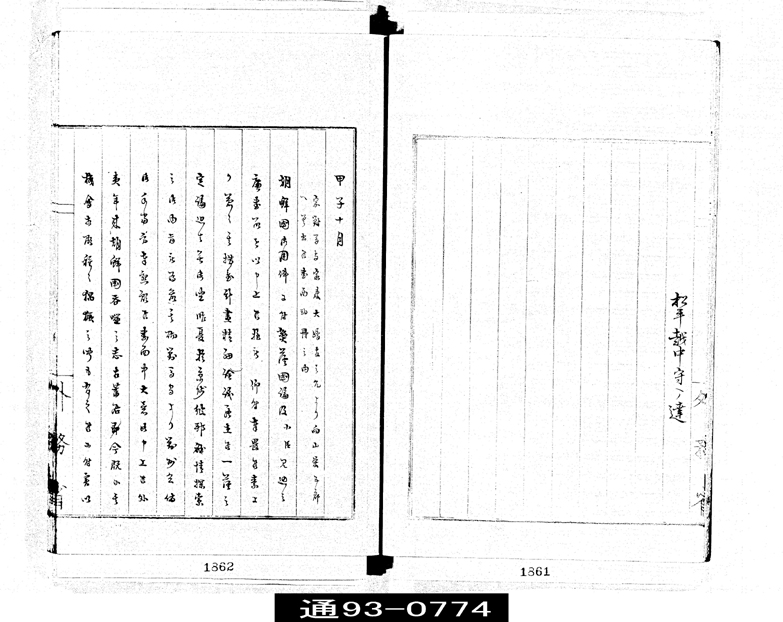
The anti-foreign faction of Tsushima approached the Choshu Domain, and demanded that the shogunate provide them with enough support to prepare for such situations, insisting that a weak defense for Tsushima Domain against foreign powers was a problem for all of Japan. They argued that if the foreign powers planned to occupy Korea, Japan should take measures beforehand or it could become a crisis for Japan. What they envisioned for Korea was that "first, Japan should extend sincere friendship to Korea as a neighboring country by persuading them to reject the advances of the Great Powers but, if persuasion does not work, we must use force."
The Meiji Government, as soon as it was established, ordered Tsushima Domain to give notice to Korea of the restoration of Japan’s imperial rule. In December, 1868, a mission bearing Shokei (diplomatic documents) set out from Tsushima Domain.
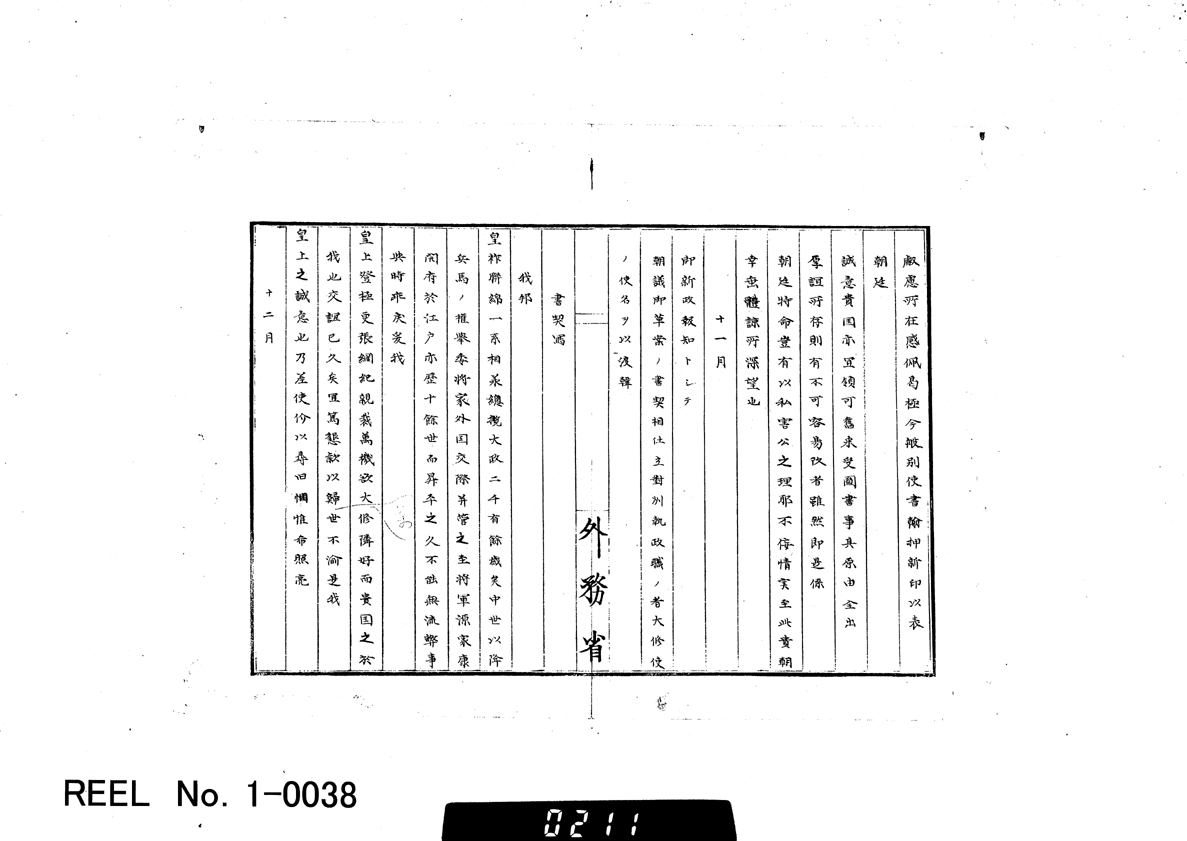
However, this document was not received. The Koreans took serious exception to the fact that the document honorific did not use proper title "Taijin (大人, Your Royal Highness)" in its salutation but instead used the lower ranking designation of "Kou (公, Duke)", and the document was written using with Chinese characters "Kou (皇, meaning Emperor)" and "Choku (勅, meaning Imperial edict)". The Chinese characters "Kou" and "Choku” directly carry the connotation of a superior-inferior relationships between Japan and Korea. The Japanese government knew that this would not acceptable to the Koreans. So Yoshiakira of Tsushima Domain sent notice to the whole domain that if/when the negotiations failed, Tsushima Domain would uphold national policy, keep loyal to the emperor, and cooperate with the state.
Reforms of diplomatic policies toward Korea were advocated within the Japanese government and Tsushima Domain. According to the new diplomatic policy, the equality that had existed between Japan and Korea via the Shogunate served to dishonor Japan and it was thought that Korea should be submissive to Japan as it was in ancient times. In his diary entry of December 14, just after when the mission left the Tsushima, Kido Takayoshi stated: "We will send an envoy to Korea, accuse them of rudeness, and if they do not accept responsibility, we will attack and fulfill our desire to expand Japan's military prestige" ("Kido Takayoshi diary" 1). Because the diplomatic document was written based on such opinions, it was inevitable that Korea would refuse to accept it.
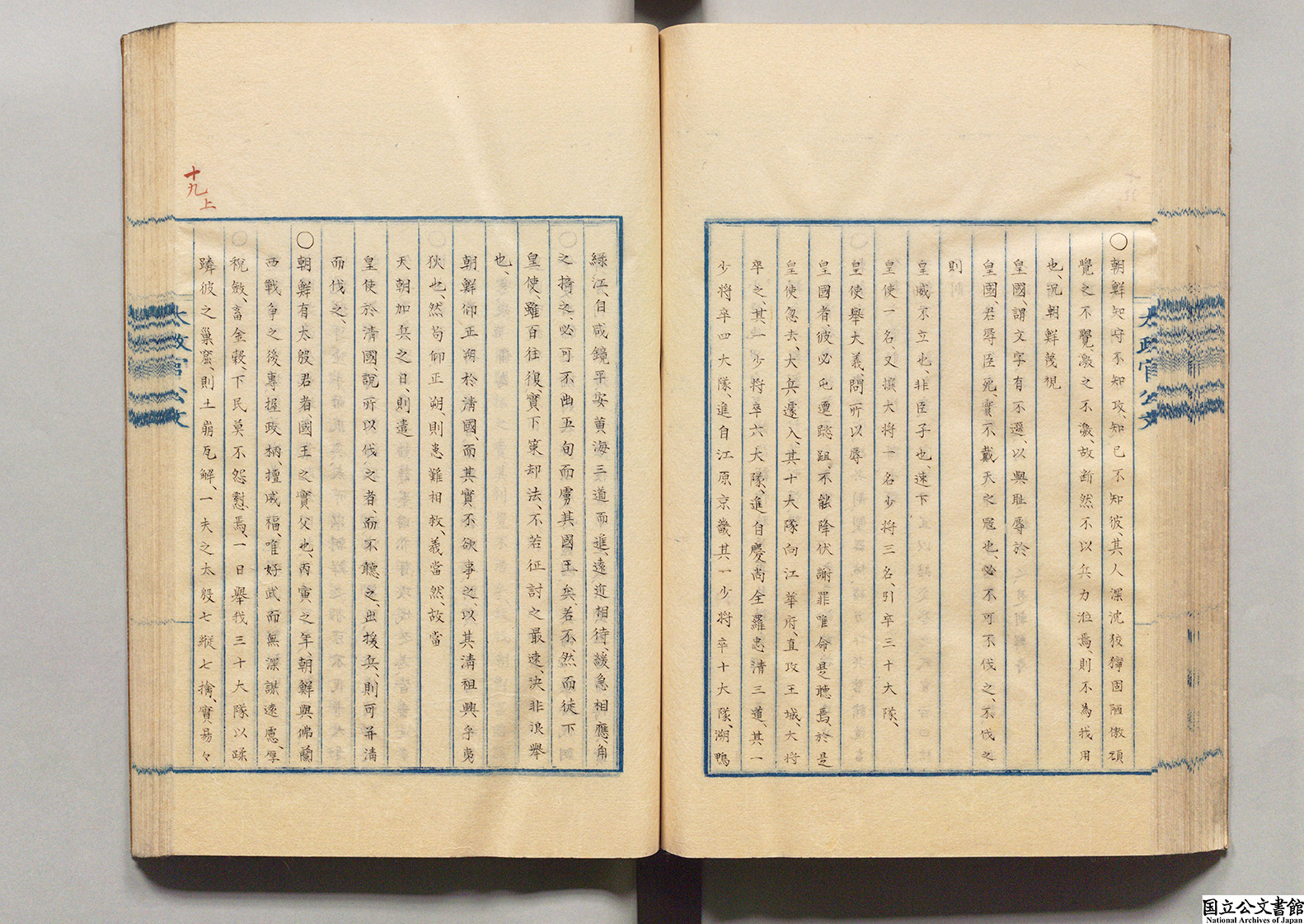
Following these events, voices within the government advocating an invasion of Korea grew louder. More and more people were of the opinion that Tsushima domain should be removed from diplomacy with Korea, and that all authority in such matters should be transferred to the Ministry of Foreign Affairs. On that premise, a team of diplomats was dispatched to investigate. In March 1870, three officials who had completed their onsite surveys of Pusan— Sada Hakubou, Moriyama Shigeru and Saito Sakae—and individually submitted their written petitions. All three argued that " an imperial envoy and, if necessary, an armed force” should be dispatched. It could be said in fact that the persons responsible for implementing and managing goverment policy shared the idea that the Tsushima domain had had since the late Edo period that “when persuasion fails, use force.”
The political change due to "Seikanron debate" of October 1873 was overlaid upon the above historical processes. The opinion to postpone the dispatch of envoys advocated by Iwakura and Okubo prevailed, and Saigo and others resigned from their posts. However, the strong-arm stances toward Asia were not abandoned and this led to the "Formosa Expedition" the following year and Ganghwa Island incident two years later in 1875.
吉野誠『東アジア史のなかの日本と朝鮮 古代から近代まで』(明石書店、2004年)
吉野誠『明治維新と征韓論 吉田松陰から西郷隆盛へ』(明石書店、2002年)
木村直也「幕末期の朝鮮進出論とその政策化」(『歴史学研究』679、1995年)
木村直也「幕末の日朝関係と征韓論」(『歴史評論』516、1993年)
井上勝生『シリーズ日本近現代史① 幕末・維新』(岩波新書、2007年)
Official records from the Iwakura Mission compiled from the "real records of circular tour in Europe and America"
The Iwakura Mission set sail from the port city of Yokohama in December 1871. They traveled to destinations in the United States, Europe and Asia, before returning to Japan September, 1873. Copious quantities of records for the one year and ten month long mission. The records were compiled into the "Ambassador Documents" by the secretariat of ambassador, who was engaged in the details of the mission. In Japan, their records were published showing particulars about the tour in Europe and America.
The official name of the compilation is the "Ambassador Extraordinary and Plenipotentiary Europe and U.S. circuit report"("The Iwakura Embassy, 1871-73"). It was compiled by Kume Kunitake who was a recording staff of the Dajokan (Council of State) and published by Hakubunsha who dealt mainly with official administrative publications in the name of the Dajokan recording official in 1878.
The purpose of compiling the records was expressed clearly in its preface ("Explanatory Notes"). It states that in Western countries the governments are a representation of the people of the nation, and the mission was an agency of the people. Ambassador Extraordinary and Plenipotentiary, Iwakura Tomomi believed that what the mission witnessed in this capacity should be made known to the country in its entirety. For that purpose, Iwakura ordered Secretary Hatakeyama Yoshinari (who also when by the name Sugiura Kouzou) and Kume Kunitake to always record what they observed and concluded on the mission: "This is the main intent of compiling this book and is one of the most important governmental functions." So the purpose of the records was to convey a formal record of experiences and information gathered by the Iwakura Mission in the West to the Japanese.
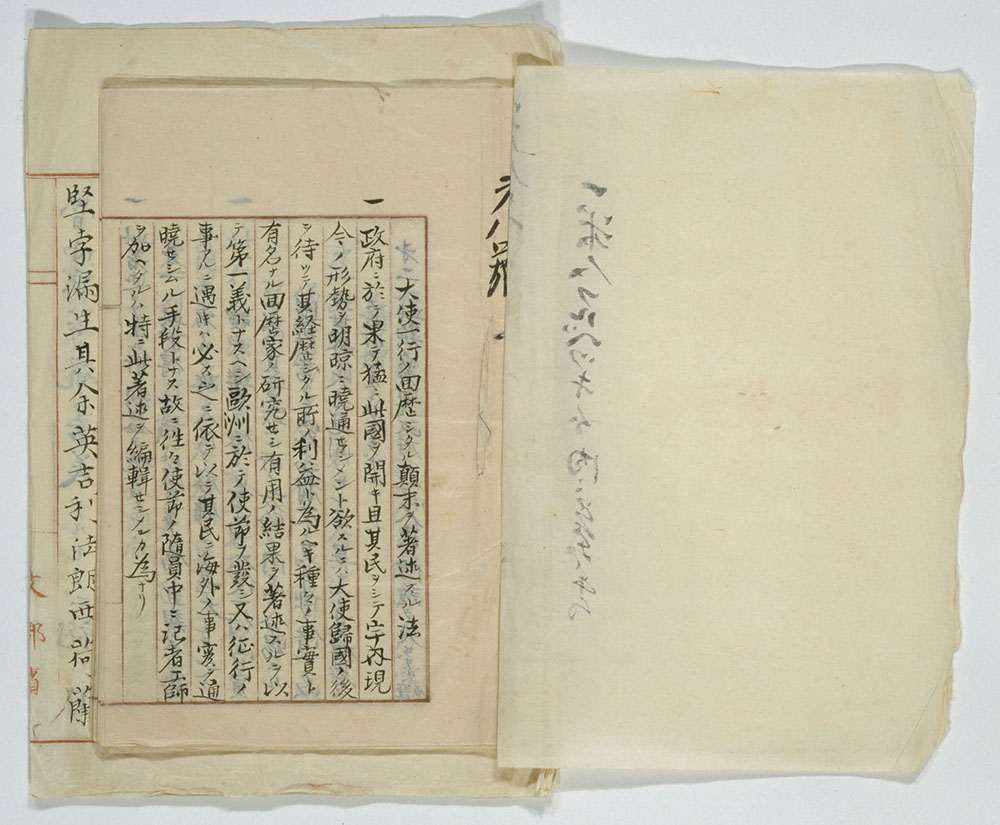
How did Iwakura come up with such an idea? It is said that a suggestion by Guido Herman Fridolin Verbeck, a foreign consultant, was highly influential. Verbeck wrote a proposal in a short missive that a mission should be dispatched to Europe and America that spawned the idea of the Iwakura Mission. When the dispatch of Mission was decided, Verbeck indicated that his missive be guideline to all details of ambassador party's visits [image 1]. The "real records of circular tour in Europe and America" included in-depth subjects of surveys as seen in this letter, and the book was considered to be as much an encyclopedia as a foreign travel journal. Thus, based on Verbeck’s proposal, Iwakura ordered Hatakeyama and Kume to record Mission's travels.

Incidentally, Hatakeyama who worked with Kume stayed in Britain and the United States for six years as a foreign student from the Satsuma Domain and was thought to be good at foreign languages. According to the explanatory notes, "Kunitake collaborated with Hatakeyama on recording frequent interviews with people and checking references," each taking on different duties: Hatakeyama as interpreter, for example, and Kume as recorder. Kume took notes of "actual observations and places visited" via Hatakeyama’s language skills. [image 2].
After the Iwakura Mission returned to Japan, the final edits of the document that the Mission returned to Japan with as well as dispatches of letters of thanks to countries visited were carried out by the Secretariat of Ambassador. The Mission had sent various documents obtained or prepared in Western countries to Japan in advance of their return to Japan, but these documents were destroyed in a fire at the Imperial Palace in May 1873. The restoration of those documents was one of the important duties of the Secretariat of Ambassador. Work on arranging and compiling these documents was suspended due to the "Conquering Korea Idea," the political change. The work was restarted in March, 1875, and finally completed mainly through the efforts of Tanabe Taichi, Kanai Yukiyasu and Kume Kunitake. The Secretariat of Ambassador compiled 27 volumes of the "Taishijimushomoku" which records and documents of the whole mission as well as 41 volumes of the "Rijikan Shisatsukan Torishirabe Shomoku" a combination of the "Rijikotei (Councilor report)" and "Shisatsukoutei(Report of visitation)." (see the "Record of the Iwakura Mission" for a detailed index of each book).
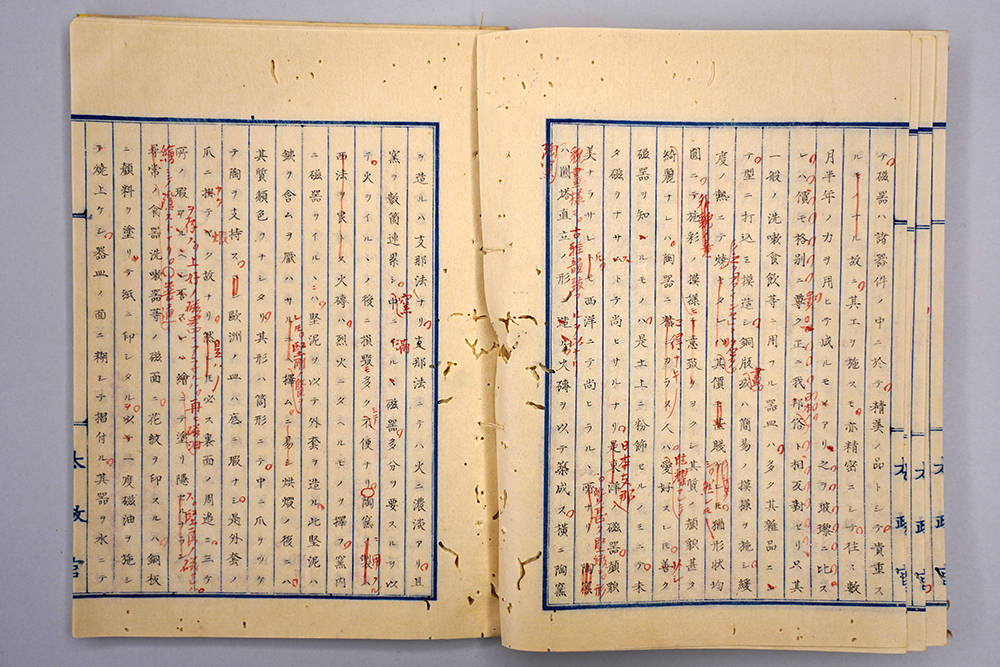
The "real records of circular tour in Europe and America" was not included in these volumes. Although it is not known whether the "real records of circular tour in Europe and America" was scheduled from the first to be published as an official report, Kume continued keeping detailed records of their travels and began to compile them after returning to Japan. The original form of the "real records of circular tour in Europe and America" was completed based on Kume’s records, and it underwent continuous edits and modifications to include documents collected by the Secretariat of Ambassador and various technical books, and took its present form only after many revisions [image 3].
The title of the book was originally the "Journal of the Europe and America Tour," but changed to the "real records of circular tour in Europe and America" on the way of compilation. The reason for the title change may have been to maintain the book’s appearance as an authentic record of “genuine observations” as mentioned in "explanatory notes." Moreover, Kume described it thus in his "writer’s comments" separately as a note to himself and incorporated this consideration into the book as well. After some corrections were added to the final draft, it was printed and published at last.
The task of the Secretariat of Ambassador was to compile an official report of the Iwakura Mission, but it was fraught with difficulties. As stated in the preface of "Taishi Zensho" (Compendium of Ambassadors): "We had to pick up ruined pieces of paper from a fire, collect descriptions from scattered boxes (.....) it was difficult to collect all of them." The greatest difficulties encountered were that documents sent to Japan were destroyed by fire and troubles with the collection and reconstruction of the rest. Another reason was the fact that "Rijikotei" and "Shisatsukoutei" had not been submitted as expected through the “hard work” of the persons in charge, despite the orders for presentation made twice in the name of Grand Minister (Dajo Daijin).
However, it was necessary to show both domestically and internationally that what was accomplished by the Iwakura Mission was a national great achievement. That is why Kume, who was in a position to continuously collect and compile records of the mission, had to arrange the records based on common denominators. Whatever the real situations may have been, the voluminous work that Kume devoted himself to was completed, read by many, and lives on still.
田中彰「解説」(久米邦武編・田中彰校注『特命全権大使米欧回覧実記』第一巻、岩波書店、1977年)
田中彰「久米邦武と『米欧回覧実記』の成稿過程」(大久保利謙編『久米邦武の研究』吉川弘文館、1991年)
芳賀徹「久米邦武と『米欧回覧実記』」(大久保利謙編『久米邦武の研究』吉川弘文館、1991年)
福井純子「『米欧回覧記』の成立」(西川長夫・松宮秀治編『「米欧回覧実記」を読む―1870年代の世界と日本―』法律文化社、1995年)
田中彰「「解説」と「解題」」(久米美術館編『久米邦武文書 三 岩倉使節団関係』吉川弘文館、2001年)


